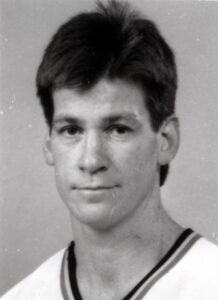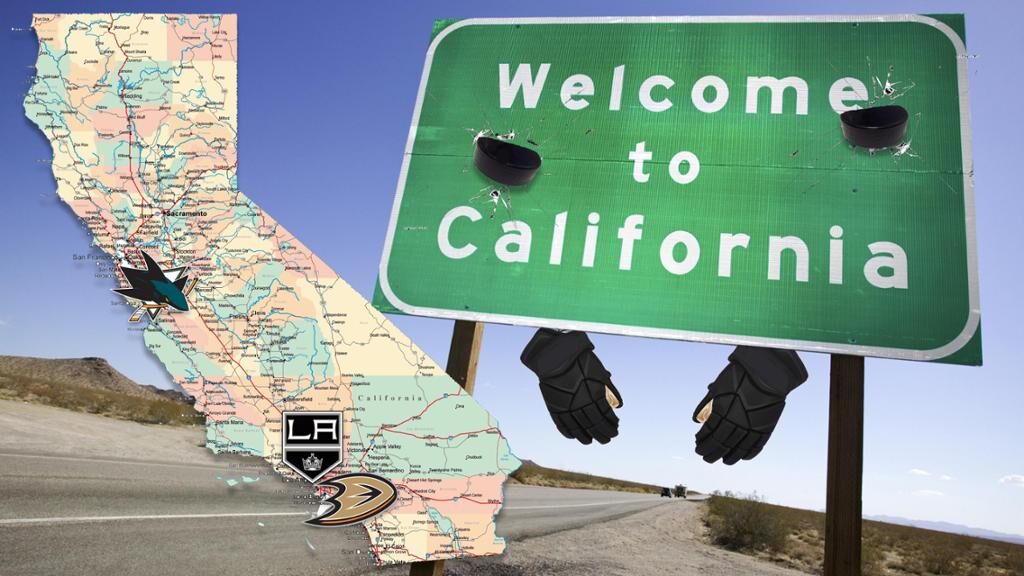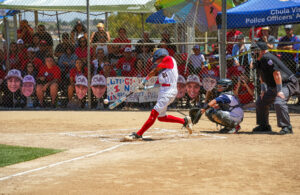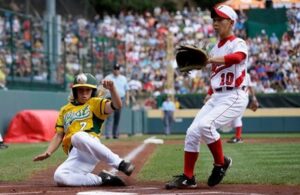Catching Up with Craig Coxe, One of the NHL’s First Californians
- Updated: September 23, 2020
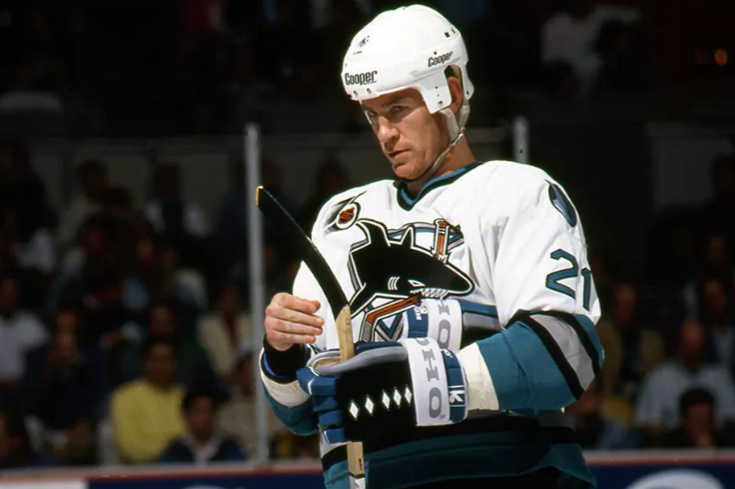
(Photo courtesy of San Jose Sharks)
While there are plenty of players representing California today, the NHL’s contingent from the Golden State was akin to finding a needle in a haystack 30 years ago. One of those few players was Chula Vista native Craig Coxe, who played professional hockey for 17 seasons, including parts of eight seasons in the NHL.
Along with being one of the rare Californians to play in the NHL, Coxe also had the rare distinction of having grown up playing, and learning, the game in the southwestern United States. Having moved between California and Arizona during his childhood, Coxe’s love for hockey wasn’t shared by his friends and classmates. In fact, few of them even heard of the sport.
I recently had the pleasure of speaking with Craig Coxe who spoke about what piqued his interest in hockey as a child, his playing career and how he’s enjoying life today.
Beaches, Deserts and Plenty of Ice
Born on January 21, 1964, Craig Coxe was born in Chula Vista, the second-largest city in San Diego County, just 11 miles north of the Mexican border — an area not known for grooming hockey talent. So, how did the future NHLer become enamoured with the sport?
“Well, how I got into hockey was my father,” Coxe said. “My father’s Canadian and him, his brother and my grandparents moved from Ontario to southern California and that’s when me and my brothers and sisters came along. My dad had played hockey his whole life, so he got me and my brothers into it when we were very, very young and we all loved it.”
For Coxe, though, any knowledge and understanding of the game was limited to his family.
“It’s funny because when we moved from Arizona back to California and I was in high school, the kids that I went to school with actually didn’t even know what ice hockey was,” an amused Coxe remembered. “Not all of them but there were quite a few. I didn’t play school sports because if I had a hockey practice or a hockey game, I’m going to miss practices and games at school [scheduled at the same times]. I mean, I was a good athlete and could have played school sports but hockey was the sport I wanted to play the most and the kids I grew up with said, ‘What are you talking about? What’s ice hockey?’ and I said to them, ‘You do realize that the Los Angeles Kings are an hour away from us.’ So, there weren’t a lot of kids I grew up with that even knew what hockey was.”
Culture Shock
As a 17-year-old, Coxe was entering his senior year of high school when he took his hockey career 2900 miles north to St. Albert, Alberta.
Playing for local Saints of the Alberta Junior Hockey League, the young Coxe, in a heartbeat, went from a region where hockey was barely heard of to where it was religion. The change of scenery was a big one, but the Californian nonetheless adapted.
“It was fun. I can tell you that,” Coxe said of his time in St. Albert. “When I moved to St. Albert, I still had one year of high school left, so I was going to school in St. Albert with a couple guys on the team and everyone knew who you were. You got treated a bit differently and I used to see this with the football, basketball and baseball players back in southern California, and here I was on that other side with the hockey part.”
How he was treated in St. Alberta, though, didn’t rub off on the future enforcer. At least not right away.
“To tell you the truth, I didn’t notice it as much then as I did later on when I got a little bit older and more mature because I just played hockey because I loved the game,” Coxe noted. “I didn’t want anyone to treat me differently because of the way I played, but it was nice. Everybody knew the sport, everybody was excited about the sport, playing junior hockey in front of a few thousand people, that’s pretty exciting for a 17-, 18-year-old kid.”
Tales of a Reluctant Enforcer
In 1982, following his stint in St. Albert, Coxe moved across Canada, joining the Belleville Bulls of the Ontario Hockey League.
That was also the year the 6-foot-4 forward got drafted into the NHL. The then-hapless Detroit Red Wings chose Coxe in the fourth round (66th overall) in 1982.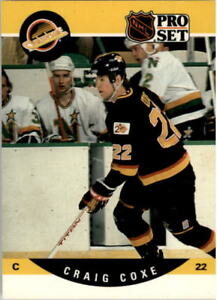
“I would have done basically anything to play in the National Hockey League,” admitted Coxe. “I got drafted by Detroit and I went to training camp in ‘82 and they told me that I needed to get a bit faster and stronger, that I wasn’t ready yet, and I completely agreed. At 18, I had come from playing two years of junior and from southern California before that, so I knew I wasn’t ready to play in the National Hockey League. But, they said that they’d keep an eye on me and to come back next year and we’ll see how it goes.
While being drafted is a thrill for any player, Coxe was left with a bitter taste in his mouth by the team that drafted him.
“Well, [the Red Wings] never spoke to me again, which I thought was pretty classless,” the Chula Vista native remembered. “So, I finished out my two years in Belleville and my coach in Belleville [Larry Mavety], he got me a tryout in Vancouver and when their coach said that he might want me to do this, he was talking about fighting, and I said, ‘Hey, I’ll do whatever you want. I just want to play in the National Hockey League.’”
Early on, Coxe had few reservations, if any, about being a fighter. After all, what better way to showcase your 6-foot-4, 220-pound frame? But, the love, and even the ease, of dropping the gloves didn’t last for the big man.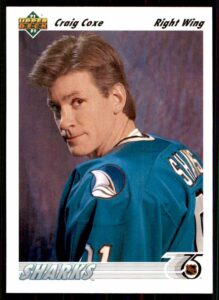
“In the beginning, [fighting in the NHL] wasn’t difficult because I was young and I just wanted to do it but after doing it for four or five years, it gets hard,” Coxe reflected. “You start to get a little older, you start to get a little more mature and that’s when I was trying to become more of a hockey player.”
Coxe, however, found himself to be, in a word, type-casted.
“Unfortunately, the coaches that I had kept putting me in the same position and it was tough,” Coxe continued. “There were a lot of guys like Dave Brown and Stu Grimson who didn’t put up a whole lot of points on the board but they knew that their job was to fight and they did it for a lot of years. So, as a guy who was a fighter, I tip my hat off to those guys, to be able to do it as long as they did and it’s not easy, game-in and game-out, sitting on the bench and once or twice a game, the coach comes down and says, ‘Okay, get that guy.’
“To me, I loved playing so much and it got hard because I wanted to play. I didn’t mind the fighting but I wanted to play also. By the time of my fourth and fifth in the NHL– I wasn’t going to be a powerplay guy or anything like that — but I could go on the ice and I would not hurt my team, wouldn’t be a detriment to my team. I could go out there, I could do my job and help the team — a good third-, fourth-line guy who could play — unfortunately, there was only one team in the NHL that gave me that opportunity, and that was Calgary, and unfortunately, I didn’t play for them for very long. [The Flames coaches] were the ones who really took an interest in making me a better hockey player. They said, ‘We know you know how to fight. We’re going to help you become a better hockey player,’ and it was great. I really enjoyed playing there but unfortunately, that big trade with St. Louis [which included Doug Gilmour joining the Flames] the following year, I was gone.”
Return to California
After his brief stint in St. Louis and a return to Vancouver, Coxe suited up for the expansion San Jose Sharks in 1991-92 to close out his NHL career.
While Wayne Gretzky played a significant role in bringing a second NHL franchise to the Golden State, I had to ask Coxe just how popular the Sharks were in that first season. After all, the club finished their maiden season with a woeful 17-58-5 record while playing in the old Cow Palace.
“When Wayne Gretzky got traded to L.A., the population of California, almost overnight, became hockey fans,” Coxe began. “By the time I got to San Jose, hockey was really popular. We had good fans at the Cow Palace and people in California knew what hockey was by that time and I really, really feel that it all came from Gretzky going from Edmonton to L.A. and he helped put hockey on the map in California.”
A State of Unprecedented Popularity
While he was quick to deflect much of the credit to the aforementioned Wayne Gretzky, Craig Coxe did help create a path for future Californian talent as one of the first statesmen to suit up in the NHL. Regardless, the California contingency is stronger than ever in the National Hockey League — a contingency that includes, among others, Thatcher Demko, Jason Zucker and, Arizona-raised Auston Matthews.
As for Coxe, he has loved the surge of popularity.
“To tell you the truth, I think it’s great. I really do,” the former NHLer emphasized. “I know I wasn’t the first born in California to play in the NHL but I don’t think there were very many in front of me. So, that’s always a nice thing to be able to look back on and you know, kids in southern California did good. And just because of how much I love the game, I’m really happy that Arizona and California really engulfed the hockey mentality and it’s gotten so popular.
“It’s the greatest game in the world and I’m glad that there are people in parts of the United States that didn’t really know what it was before that, who actually watch it and realizing what great athletes these players are.”
When looking at the surge of hockey popularity in the southwestern U.S., however, the 56-year-old couldn’t help but laugh when remembering the limited knowledge his friends and classmates had about the sport.
“Sometimes, I chuckle, thinking, ‘I wonder what some of the kids I went to high school with are thinking about me now,’” Coxe noted. “40-something years ago, they were wondering why I was playing hockey. And I met a few over the years or I’ll get an email or a letter here and with the internet now, it’s pretty easy to find a guy like me and they’ll say how great it is that I’ve done so well and that’s always a nice thing. You don’t always know who the person is because I’ve moved around a lot and got hit in the head a few times but it’s nice that every once in a while, someone will reach out.
“I remember this one time, this lady wrote to me and said, ‘My husband’s a big hockey fan, we have three kids and they all play hockey ,’ and these were people who didn’t even know what hockey was when I was growing up with them.
Overall, though, Coxe is very happy with how California and the southwestern U.S. is represented in the NHL and beyond.
“I’m really happy that hockey has taken off the way it has, especially out in the west where not too many people knew what it was.”
A Hockey Lifer
His playing career may be over but Craig Coxe’s life in hockey is anything but.
The former Vancouver Canuck is living in Cheboygan, a city on the northern tip of Michigan where he manages the local rink and even coaches the high school hockey team.
I asked Coxe how he’s enjoying hockey-filled life.
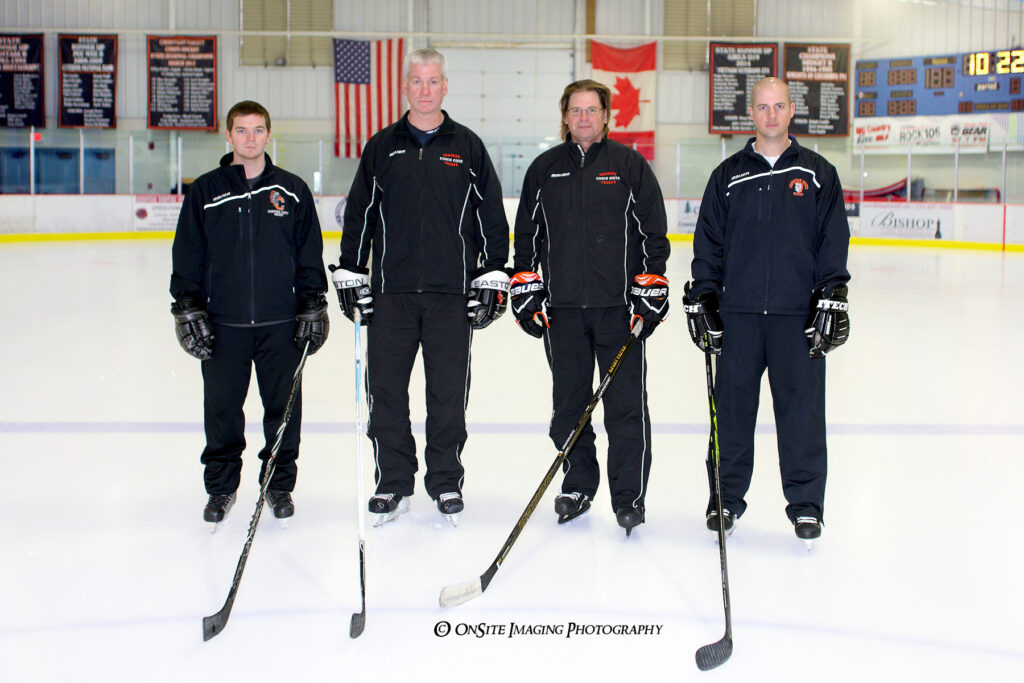
(L to R) Ass’t Coach Seth Duncan, Head Coach Craig Coxe, Ass’t Coach Tom Smith, Ass’t Goalie Coach Kevin Chapman
(OnSite Imaging Photography)
“I’m enjoying life very, very well overall,” Coxe beamed. “I’ve been in Michigan now for almost 20 years. I met my wife up here and we just had our 13th anniversary in June. I’m really happy that I’m doing a job where I’m able to give back what I did for so many years. I got to play, between the NHL and the minors, 17 years of professional hockey and actually, at my age, as beat up as my body is, I’m still able to coach. I coach the high school team here in Cheboygan. So, to be able to be around the rink and go out on the ice with the little kids, the four- and five-year-olds who are just learning, it’s a lot of fun to see those smiles on those faces. They keep falling down but they keep getting back up and they’ve got a big grin on their face, just happy to be there and you’re helping them learn how to play the game.”
While hockey certainly is an important part of his life, Craig Coxe has been to emphasize his importance on carrying himself as a human being, a lesson he instills in those he coaches.
“With my high school kids, they’ve been playing for a while, to be able to coach and to give back, try to help these guys not only to become better hockey players but to become better people, to explain to them that when you’re an athlete, people look at you in a different way,” Coxe explained. “You have to try and do things right. You’re not an average joe walking down the street, so I tell my players that I’m not just teaching them to play hockey, I’m teaching them to be better people.
“So, overall, I’m really happy with the way things turned out. I couldn’t be happier. My wife’s the best thing that’s ever happened to me. I’m really pleased with the way my life is right now.”
My first impression of Craig Coxe was watching him fight the late Bob Probert in a classic fight at Detroit’s Joe Louis Arena. The bout, which I later called ‘Hagler & Hearns on Ice’ (Google it, kids!), showed myself, and countless other fans, just how tough the Chula Vista native was. Any fear and intimidation I felt towards Coxe, however, was unfounded.
He may not have been the most famous California-born NHLer but as happy and as laid-back as he is, Craig Coxe looks back on his career and his life not wanting to have had it any other way.
The late, great Jackie Robinson famously said that a life is not important except for the impact it has on others. Thanks to the kids and young adults of Cheboygan alone, this fits Craig Coxe to a T — a man who, when it is all said and done, will know that he had done all right.
Just don’t expect that day to come any time soon.

